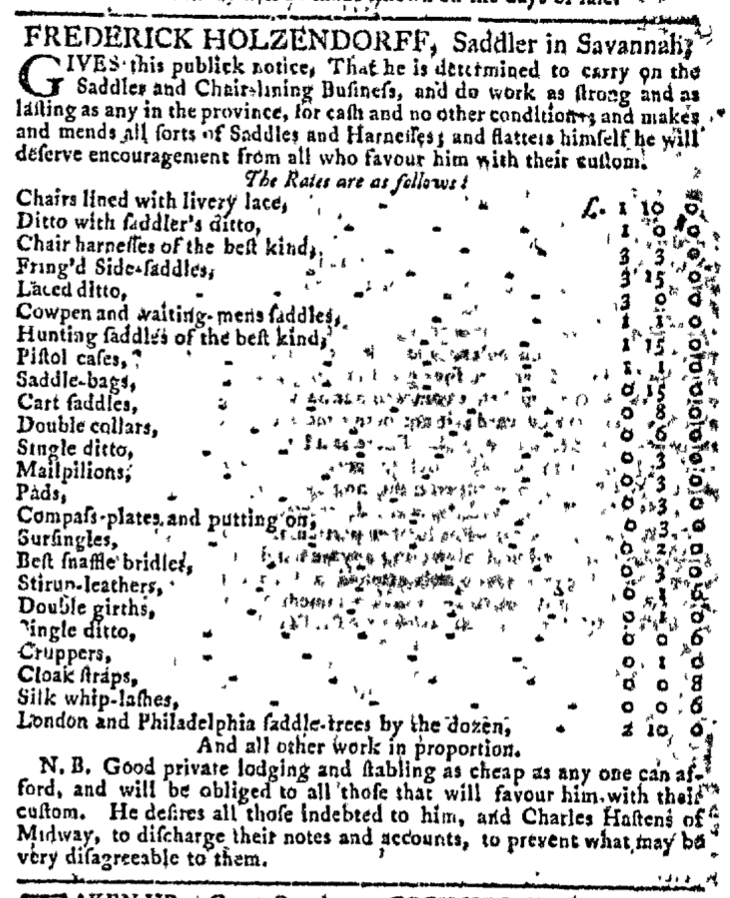What was advertised in a colonial American newspaper 250 years ago today?

“Chairs lined with livery lace, – – £.1 10 0.”
With the exception of subscription notices for books, prints, and other printed items, eighteenth-century advertisements rarely included prices for goods offered for sale. Merchants and shopkeepers sometimes indicated prices for limited numbers of items listed in their lengthy advertisements, but rarely did they associate specific prices with more than two or three products. Instead, they tended to promise low and competitive prices. Merchants who sold wholesale also indicated they offered discounts to those who purchased in bulk. Sometimes producers and suppliers published shorter advertisements that promoted just one or two commodities and indicated specific prices. Rarely, however, did an advertisement listing more than half a dozen items include prices for each of those items.
Frederick Holzendorff, a saddler in Savannah, took a unique approach to his advertisement when he specified prices for every items listed in his advertisement, from “Fring’d Side-saddles” (his most expensive product at 3 pounds and 15 shillings) to “Silk whip-lashes” and “Single girths” (his least expensive at only 6 pence each). The saddler let prospective customers know exactly what they could expect to pay for “Chairs lined with livery lace,” “Cart saddles,” “Best snaffle bridles,” and nearly two dozen other products. This allowed for comparison shopping, but may have also attracted customers who remembered approximately how much they paid for similar goods when they previously dealt with any of Holzendorff’s competitors.
Such an advertisement represented an investment by the saddler. In column inches it was the longest advertisement that appeared in the December 10, 1766, issue of the Georgia Gazette, thanks to the table that carefully listed one product per line along with its price in pounds, shillings, and pence. In and of itself, the table of “Rates” for each item visually distinguished Holzendorff’s advertisement from others. Though a couple of the dense real estate and legal notices may have had higher word counts, Holzendorff’s advertisement had more words than any that offered consumer goods and services.
Holzendorff experimented with indicating a price for every item he listed in his advertisement, presumably believing that this strategy would attract sufficient business to offset any additional costs of his lengthy advertisement compared to the shorter notices that appeared in his local newspaper.
